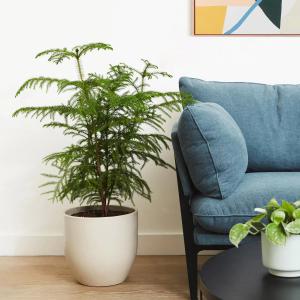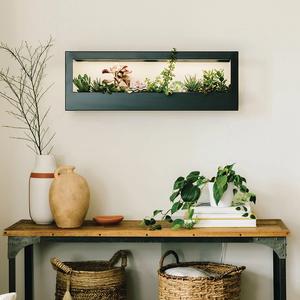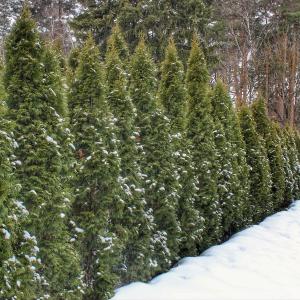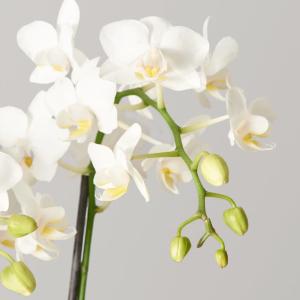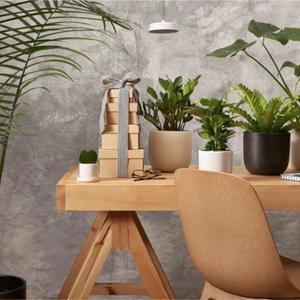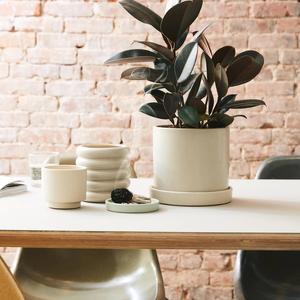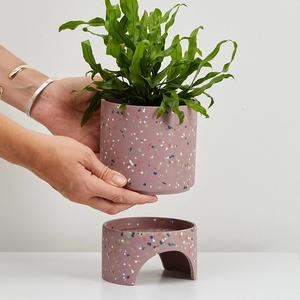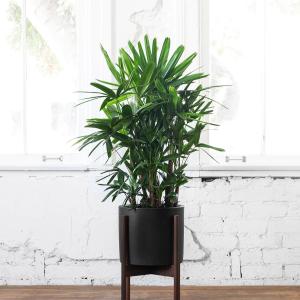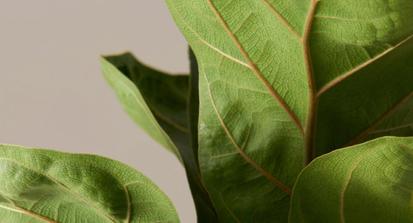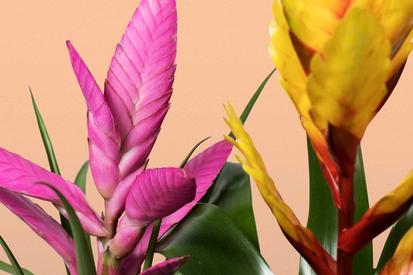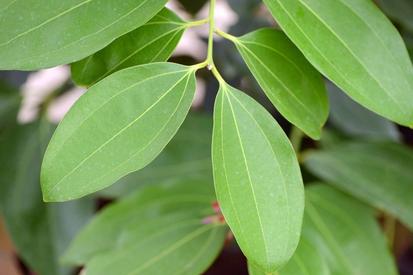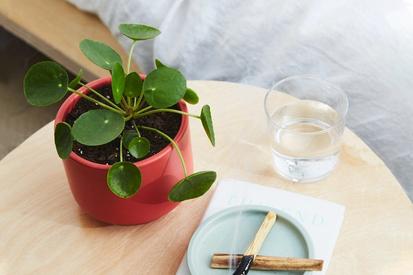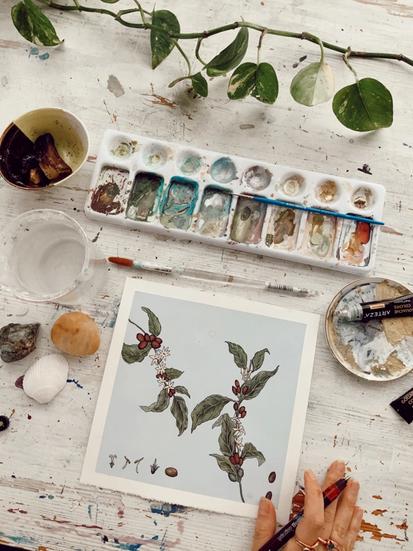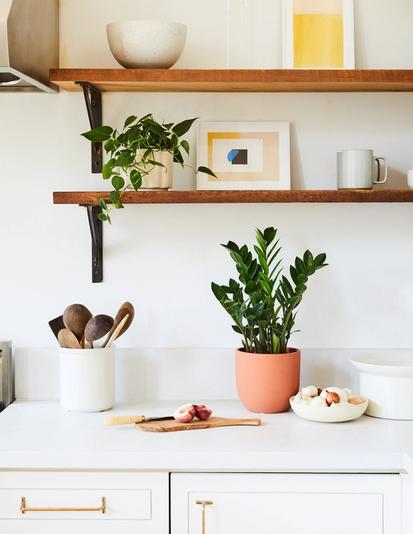Monstera deliciosa, often called the "Swiss Cheese Plant," has become a beloved staple in many households, captivating plant enthusiasts and interior designers alike. Known for its striking, fenestrated leaves and vigorous growth, this tropical beauty instantly brings a touch of the tropics to any indoor space.
Native to the rainforests of Central and South America, the Monstera resides in the Aroid family (Araceae) and are one of the few aroids that produces edible fruit, though they rarely flower or produce edible fruit indoors. It typically grows as a climbing vine, using its aerial roots to attach to trees as it ascends toward the canopy in search of sunlight.
To best mimic their climbing habit indoors, start by placing a sturdy coco coir pole into the pot near the plant's base, which is easier accomplished during repotting. Gently guide the plant's aerial roots and vines toward the pole, securing them with soft ties, velcro plant tape or plant clips without constricting the stems. Over time, the aerial roots should naturally attach to the pole as long as you keep the pole moist by misting or watering. This will encourage the plant to climb which helps to control its size and develop its signature fenestrated leaves.
Swiss Cheese Plant
Depending on the season and maturity of the plant, your Monstera could arrive with no holes just yet, and be sized to grow alongside you.
Monstera Care Instructions
Whether you're a seasoned plant parent or a newcomer to the world of indoor gardening, understanding the care needs and unique characteristics of Monstera deliciosa can help you cultivate a lush, thriving plant.
Sunlight
Thrives in medium to bright indirect light to a few hours of direct morning sun. Preferably found in an East or West window, or a diffused South window. Not suited for intense, direct afternoon sun but can be acclimated to withstand it.
While the Monstera deliciosa can tolerate lower light conditions it will inhibit its growth and prevent fenestrations from developing. Not sure if your plant is receiving enough light? Try measuring with a light meter to ensure your Monstera is in the correct conditions.
Water
Water every 1-2 weeks, allowing soil to dry out between waterings. Expect to water more often in brighter light and less often in lower light. Pro tip: Monsteras can benefit from filtered water or water left out overnight before using.
Humidity
Normal room humidity will do, but the Monstera will grow better under higher humidity conditions if possible, preferably between 40-60%. Consider incorporating a humidifier to boost humidity levels more consistently if the air in the home is dry.
Temperature
The Monstera deliciosa will prefer temps in the 65°F-85°F range (18°C-30°C). It’s best not to let it go below 60°F (15°C) to prevent cold damage.

Potting & Soil
Repot when its roots start growing out of the drainage holes or when it becomes root-bound, typically every 1-2 years depending on how fast it grows. Spring is the best time to repot, as the plant is actively growing. Choose a pot that’s 1-2 inches larger in diameter than the current one.
Use a well-draining potting mix that is rich in organic matter. If desired, you can mix in extra ingredients such as perlite or lava rocks to increase soil aeration and drainage around the roots.
Fertilizer
Fertilize on a bi-weekly or monthly basis during the growing season (spring and summer) using a balanced, water-soluble fertilizer applied at the time of watering. Reduce or stop fertilizing during the fall and winter when the plant’s growth slows, but if you're growing under a grow light year-round you can continue to fertilize. Always follow the instructions on the fertilizer label for best results.
Pruning
Monstera don't require much pruning aside from removing dead, lackluster foliage or to control the size of the plant as it matures.
To prune, use clean, sharp pruners to cut back any dead, damaged, or overgrown leaves and stems. If you're pruning to encourage new growth it's best to do so during the growing season (spring or summer) when the plant is actively growing and cut just above a node.
Propagation
To propagate a Monstera deliciosa, take a cutting just below a node (where a leaf is attached to the stem), ensuring the cutting has at least one aerial root and a leaf. Place the cutting in water or moist soil, keeping it in a warm, bright area but out of direct sunlight. Change the water weekly if propagating in water, or keep the soil consistently moist if using soil. Once roots are well-established, usually in a few weeks to a couple of months, transplant the cutting into a pot with well-draining soil and continue with proper care.

Common Problems
The Monstera is an easy-going plant and is generally pest-free. Treat pests as soon as they appear with weekly sprays of a natural pesticide like neem oil or an insecticide and regularly wipe-down the plants leaves.
Here are some common problems you may encounter when caring for a Monstera deliciosa:
SYMPTOM: Leaves turning brown and crispy at the edges
CAUSE: Thirsty plant, underwatered or high salt build up
SYMPTOM: Wilting plant, dry potting mix
CAUSE: Underwatered or pot-bound
SYMPTOM: Yellowing leaves or black stems, wet potting mix
CAUSE: Overwatered
FAQs
Are Monsteras toxic to cats?
Monsteras are toxic and can be irritating to cats, dogs, and humans if foliage is consumed. Best practice is always to keep houseplants out of reach of small children and pets.
Can I leave my Monstera outside in the summer?
Yes, you can leave a Monstera deliciosa outside in the summer, as it enjoys warm temperatures and indirect sunlight. However, ensure it's placed in a fully shaded area to avoid direct sun, which can scorch the leaves. Bring it back indoors when temperatures start to drop below 60°F (20°C) to protect it from cold stress.
Why is my Monstera not developing fenestrations?
A lack of fenestrations could be caused if the plant is is getting insufficient lighting, humidity, or even inadequate support for climbing. Immature plants or those that are too young may also lack fenestrations, as the splits typically appear as the plant matures. Ensuring the plant has proper care and conditions will encourage the formation of these unique leaf patterns over time.
Words By The Sill
Empowering all people to be plant people—a collection of articles from The Sill’s team of plant experts across a variety of plant care topics to inspire confidence in the next generation of plant parents. Welcome to Plant Parenthood™.
